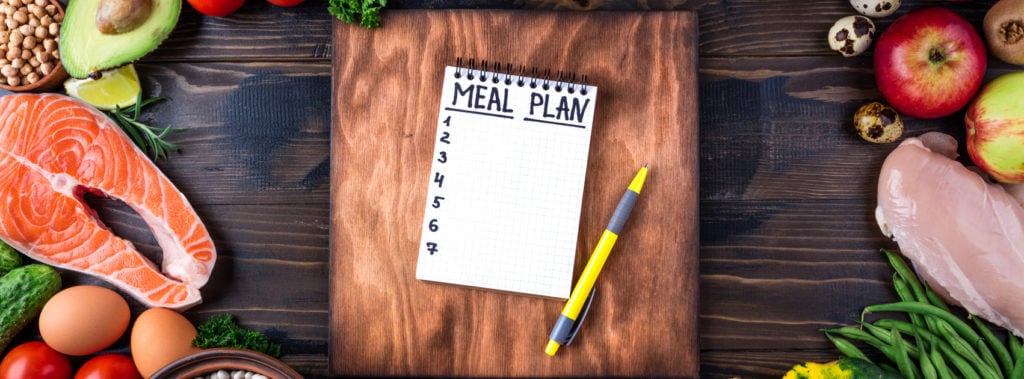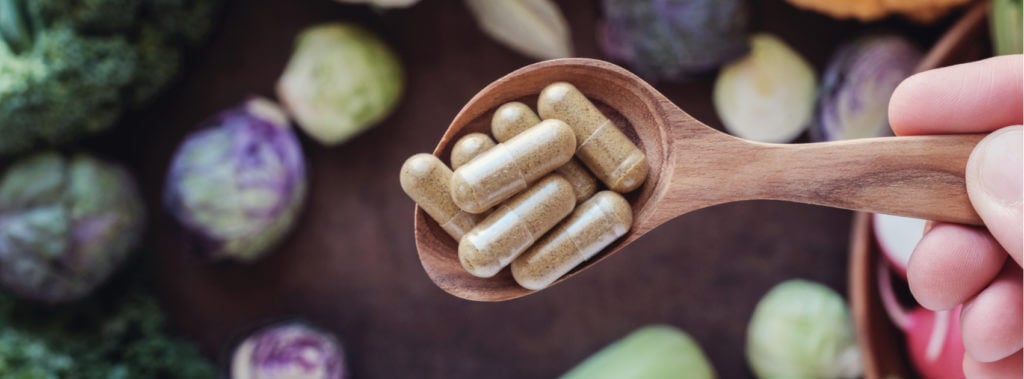How to Improve Your Diet: Meal Planning 101? An important part of staying in shape and remaining healthy is your diet. Contrary to popular belief, you cannot overcome the pitfalls of a poor diet by exercising and being physically active.
While physical activity is important to good health, sticking to a nutritious diet is just as vital. Eating well gives you the energy you need for work, play, training your dog, and everything else you have to do.
One common obstacle to healthy eating is general busyness. If you get up early in the morning, head off to work, go home and pick up your dog, head off to the field for a couple hours of training and practice, then get back in the door with just enough time to eat something, get some housework done, and relax for an hour before bed, there is little time to cook and prepare nutritious meals.
A bit of meal planning in advance, however, can save the day (as well as your health). Read on for part one of our series on how to improve your diet, which focuses on meal planning.
Make a Shopping List
If you are stopping at the grocery store in a hurry or on a whim, it is easy to forget necessary ingredients that you will need for quick, nutrition-filled meals and snacks. When you have some downtime, write down the fruits, vegetables, dairy products, whole grains, and lean sources of protein that should be the mainstay of any good diet. Also, add in things such as butter, olive oil, condiments, and some ideas for healthy treats. Type up the list, save it on your computer, and print out some copies
Next, go through your refrigerator, freezer, and pantry to see what you have that’s on your list and what you need for the upcoming week. Each time you shop, use a copy of this list to keep you on track. This way, instead of buying items that look good to you in the store, you can focus on replenishing the healthy foods that you want to keep around your house.
A few tips for when you are actually in the grocery store:
- Don’t shop when you are hungry. Stave off hunger pangs with a quick, healthy snack before you go. This will minimize impulse purchases such as the bags of chips and candy bars conveniently located near the cash registers.
- Stick to the perimeter of the store. Except for condiments, oils, beans, and some whole grain products, most of what you buy for a healthy diet will be located around the edges of the grocery store. Produce, eggs, milk, and meat should make up the majority of what’s in your cart.
- Choose treats wisely. Yes, you will want to treat yourself occasionally. Think about what types of treats you might enjoy and limit yourself to just a couple. Dark chocolate is good for your heart and can satisfy a craving for sweets. You might also choose to splurge on healthy treats that are normally out of reach, such as exotic fruits or a piece of expensive fish.
Package Up Your Food as Soon as You Get Home
When you walk in the door with your groceries, divide some of the food into single-serving containers for the ultimate in grab-and-go convenience. If you like hard-boiled eggs, go ahead and boil 3-5 days’ worth. If you cut up your berries ahead of time and place them in small containers, you could take one container of berries, a cup of yogurt, and a hard-boiled egg, giving you a nutritious breakfast that you can grab as you sail out the door on a busy morning.
You can also chop up vegetables for a salad that you’ll take with you to work. Sliced bell peppers, carrots, and onions will stay good in the refrigerator for roughly 3-5 days in an airtight container. In the morning, all you’ll need to do is grab a big handful of lettuce, cut some slices from a cucumber, and chop up half of a tomato to add to the bowl for a delicious lunchtime salad. Don’t forget the protein: Add some shredded cheese, diced chicken breast, or carry along a small can of tuna.
Cook Ahead of Time
If you enjoy cooking, try to find time during the week to make a batch of several different types of food. For example, you could grill up several meals’ worth of chicken breast and store the cooked meat in the fridge or freezer. Mix it into salads or use a variety of homemade or store-bought sauces to liven it up for dinner.
You can also cook ground beef ahead of time and portion it out into meal-sized servings. On busy evenings, boil up some whole-grain noodles, add a jar of low-salt organic tomato sauce, and make a quick pasta for an easy and nutritious meal.
Being busy doesn’t mean that you need to hit the drive-through or vending machine at work for your meals. Do what you can to plan ahead and prepare your food during less-busy times so you will still have healthy foods to eat when you are short on time. Switching to a healthier diet will give you more energy, and it might even save you money if you’ve been relying on takeout too frequently. Improve your diet with meal planning and reap the benefits!










